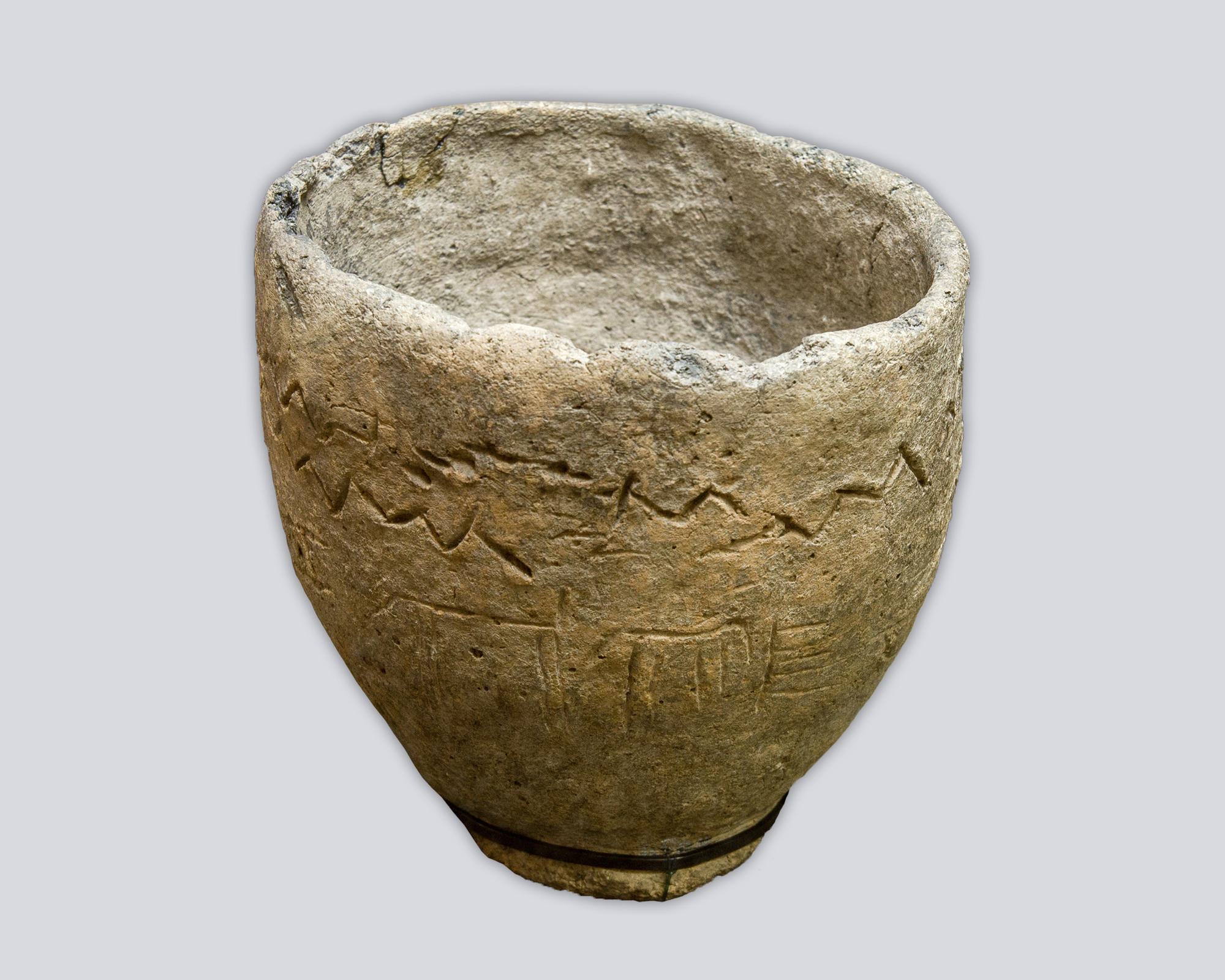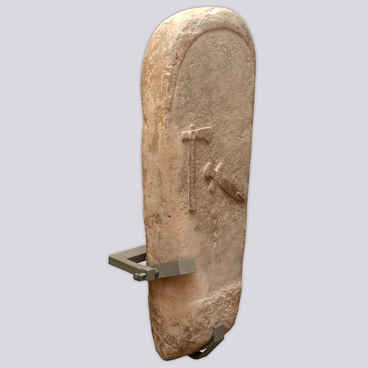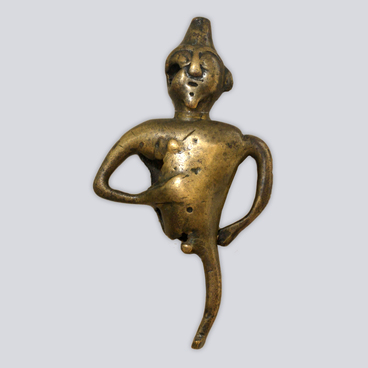In the 16th-12th centuries BC, between the Dnieper and the Ural there was a flourishing cultural community which scholars call the log culture. The name of this ethnic group originated from its burial traditions: dead bodies were put into a log box, which was then buried in the ground. On top, a mound was made and enclosed. As a rule, coffins were made of wood or stone and the enclosure of limestone plates.
Jar-like vessel
Время создания
15th-14th centuries BC
Размер
12,2x12,35 cm
Техника
Clay. Hand making, pit burning
Выставка
4
Открыть в приложении#1
Jar-like vessel
#3
#4
Inside log burial places, archaeologists have discovered lots of objects, such as weapons, bronze decorations, articles made of bones, and clay vessels. One such finding is represented on display, it is a vessel found by the historian Nikolai Likhachev during the excavation of the Polyanski burial place in 1880.
The ancient craftsmen made it by hand, drew an ornament, and placed in a pit to burn. This made the cup quite durable, and the illustrations on it have survived. In the simplistic drawing, one can see a natural landscape, a few horses, and a cart without wheels.
#5
In experts’ view, the picture testifies to the fact that the log tribes in the steppe and forest-steppe zones were already domesticating animals and developing agriculture in the 15th-14th centuries BC.
#6
The clay vessel demonstrates one more typical feature of the log people’s culture. It shows two pairs of horses during their mating period, and the figure ‘two’ played an important role in the log tribes’ beliefs and views. On various cult objects, numerous signs could signify “two”, not only pairs of objects: it could be horseshoes, ovals, U and E looking signs, and so on.
#2
Since the vessel was discovered in the Polyanski burial place, near priests’ graves, explorers believe that it had a sacral meaning in the Late Bronze Age and could be used in various rites, for instance those associated with fertility. Consequently, the picture of mating animals on the vessel is felt by experts as symbolic, magic. Supposedly, on the one hand, the picture signifies a wish for cattle fertility, and on the other hand revival of the eaten or dead animals.
читать дальшескрыть
00:00
00:00
1x
Jar-like vessel
Время создания
15th-14th centuries BC
Размер
12,2x12,35 cm
Техника
Clay. Hand making, pit burning
Выставка
4
Открыть в приложении
Поделиться



